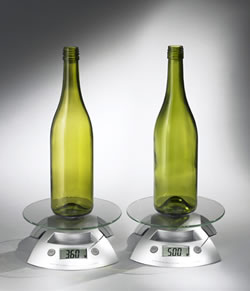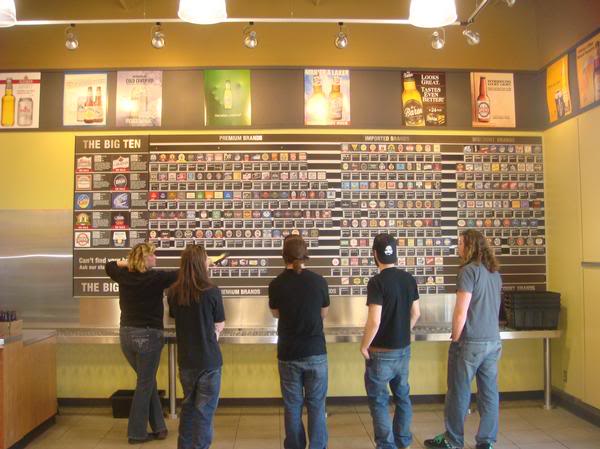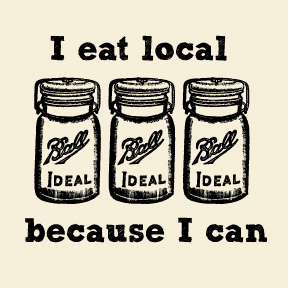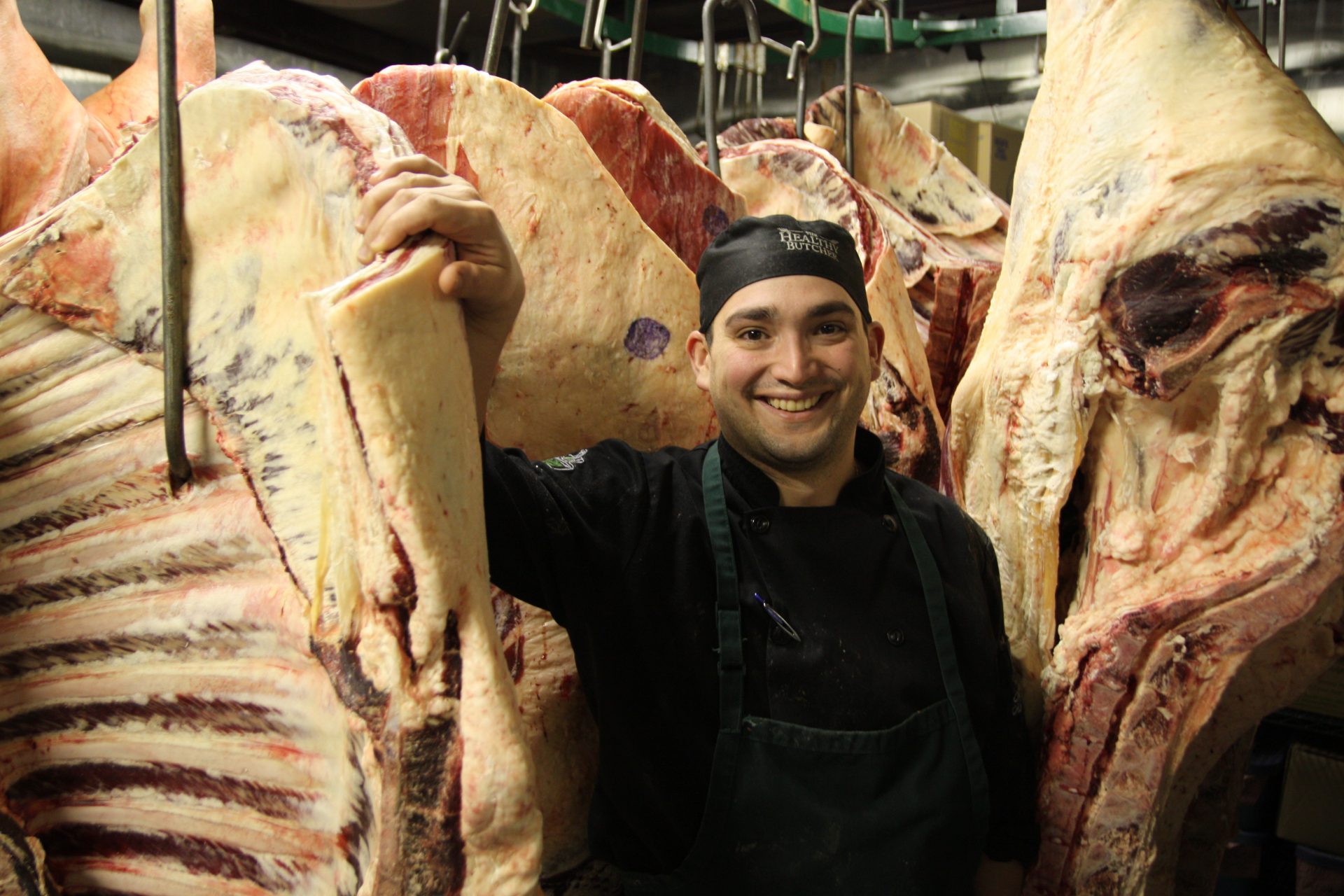By: Nicole Campbell
I have become accustomed to knowing more about the consumption patterns of wealthy Chinese or the price of prestigious Bordeaux than the wine news of my own country.
I was thus delighted to see yesterday’s article in Decanter announcing the LCBO’s move towards lightweight wine packaging. The shift will see the LCBO refuse to stock any bottle over 420 grams by January 1st 2013. The maximum weight will only apply to wine bottles under $15, and does not include champagne.

A comparison of different 750 mL glass wine bottles.
This is a huge step forward. The LCBO is one of the world’s largest buyers of wine with $4.3 billion in annual sales. Although the policy is not for all wines, the $15 and under category is enormous, accounting for 77.4% of the province’s wine sales. The weight limit is not planned to be extended beyond this category, but LCBO Senior Vice President of Sales & Marketing, Bob Downey, has stated in an open letter to the province’s wine trade that a preference for lighter bottles at all price points will be given.
The average bottle of wine is currently 500 grams with many bottles tipping the scales at 1-2 lbs. The big bottle phenomenon, once relegated to the icon California Cabernet or Italian Barolo, has spread to all categories of the wine market. The SUV of wine bottles, the big bottle is no more secure or less likely to break than a lightweight bottle of 380-420 grams. The increase in bottle size is purely aesthetic. Marketers are convinced that heavier bottles feel more exclusive, expensive and prestigious. In a world of choice, a unique – see, massive – bottle can set a wine apart on a shelf. It can also set a wine apart at home: when it doesn’t fit in your wine rack, is too long for your fridge and takes two hands to pour.
Where there was once a choice between Bordeaux and Burgundy bottle, the Big Bottle now rules the market. Beyond the arm ache it gives to unlucky pourers, the extra glass unnecessarily inflates production, shipping and recycling waste.
Some wine writers have taken a stand against the heavy bottle, most notably Jancis Robinson. Jancis launched the “name and shame” section of her website in 2008, enabling subscribers to post their heaviest bottle with the hope of shaming the industry into better standards. She attacks “bodybuilder bottles” that serve no point other than to “satisfy an ego or a marketing concept”. Oz Clarke has also griped about the “nonsense” of overweight bottles stating there is no reason an “empty bottle from one winery weighs as much as a full bottle from another winery”.
Ontario is not the first to take a stand on the matter. South Africa has been a leader in the field, introducing 350 gram screwcap bottles to reduce the environmental impact of their growing export industry. Massive UK supermarket Tesco have also taken a stand, moving to 300 gram bottles for their lower cost wines.
As a good Generation Yer, I immediately took to twitter sharing the LCBO’s announcement with my followers. While some praised the program, I was surprised to find so much dissidence in a decision I saw as unequivocally good. By setting a maximum bottle weight the LCBO was greatly reducing the environmental impact of wine drinking Canadians – and we do like to drink – without affecting product quality or breakability, right?
Most of the concerns were over the perceived dictatorial style of the announcement. Tweets accused the LCBO of turning Ontario into a Nanny State, arguing that customers should have the decision to drink what they liked regardless of weight. Others questioned the LCBOs true motivation behind the decision or implored other alternatives like glass reuse.
The LCBO is a monopoly and as such controls every aspect of how wine is bought and sold in the province. It is undoubtable that the reduction in glass weight has many benefits for the LCBO including decreased transport cost and “ergonomic benefits for the Retail and Logistics employees” (see, less back aches), but does that matter?
Overall thousands of tonnes of glass will stay out of our landfills because of the LCBO’s actions. What do you think? Is the move towards lightweight bottles a good decision or just another example of an over-controlled system? Is the LCBO going far enough or should more expensive bottles be included? Will you miss the big, big bottles and have you even noticed them at all?
 Nicole Campbell is a wine blogger and all around worker bee for Lifford Wine Agency, Ontario’s largest supplier of wine to the hospitality industry and VINTAGES. Follow her on twitter @liffordnicole.
Nicole Campbell is a wine blogger and all around worker bee for Lifford Wine Agency, Ontario’s largest supplier of wine to the hospitality industry and VINTAGES. Follow her on twitter @liffordnicole.








Great piece Nicole.
I enjoyed that!
I think it’s a good move. Especially capping it at $15. LCBO are using their power for good here. Living more sustainably is a moral issue.
maybe if they were really worried about Fuel consumption and eco-stuff and not so much about appearances they would address the issue of having agents drive all around the province servicing the shortages in their own service segment.The LCBO could ship far more efficiently than 400 individual agents .
or maybe they could let agents have their own warehousing and allow us to manage our affairs more efficiently. As if?
A toast to the LCBO!
The country’s biggest drug dealer.